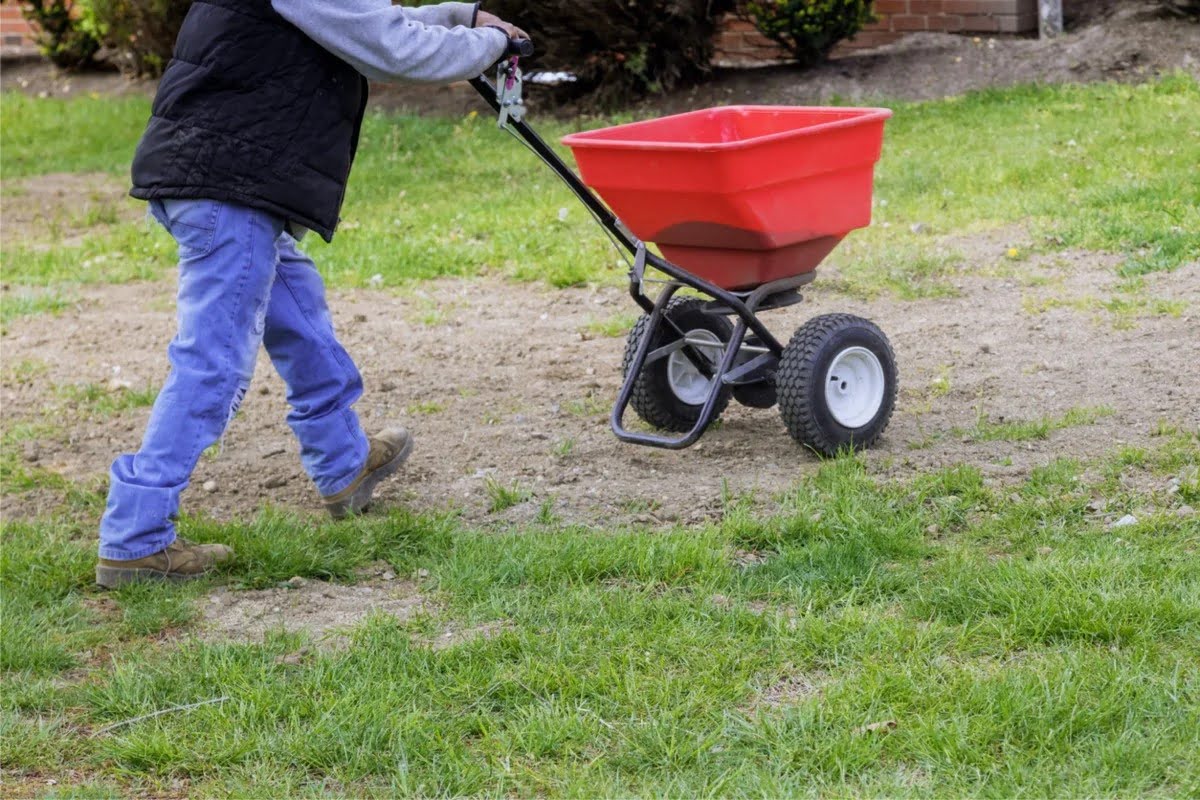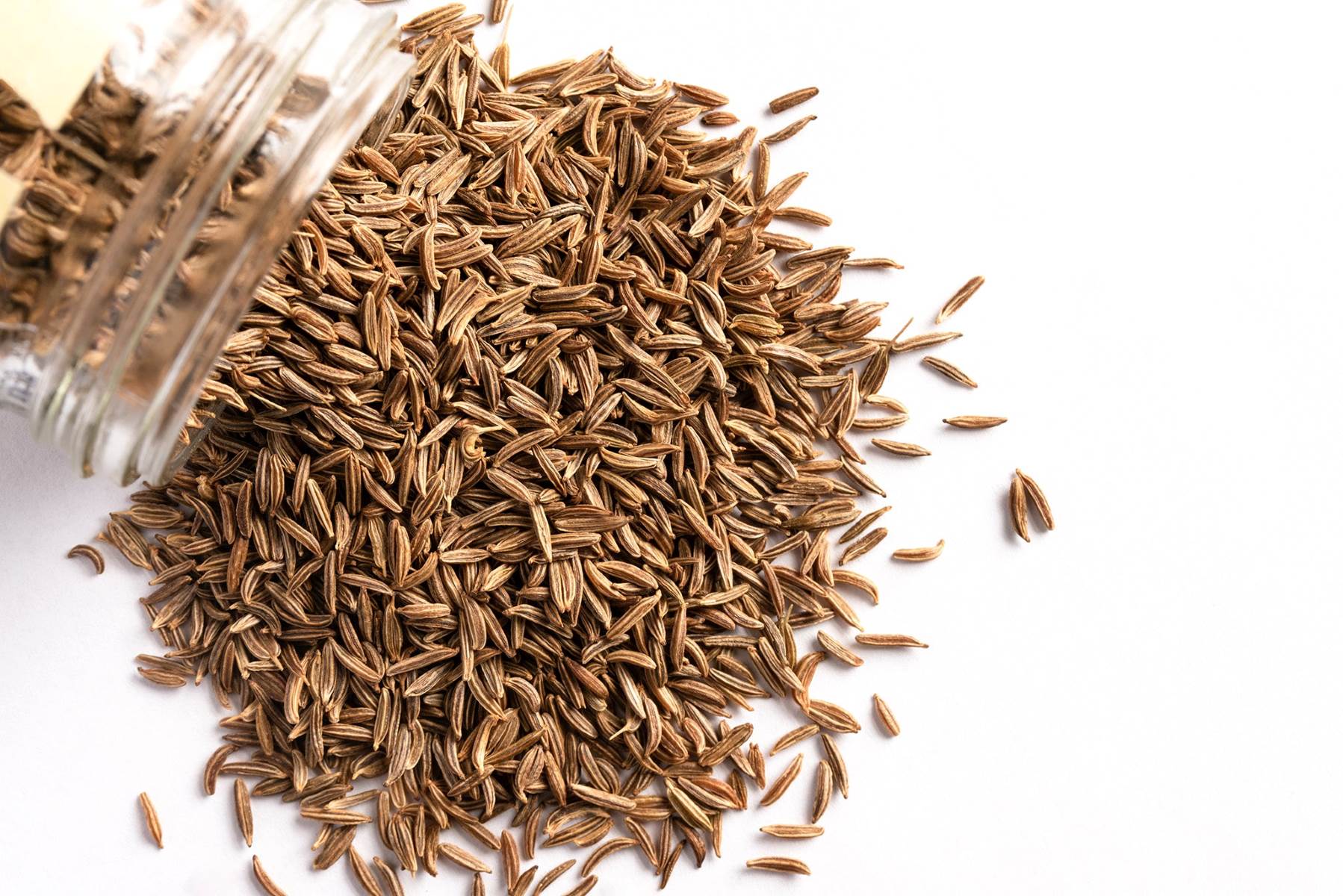Home>Gardening & Outdoor>Landscaping Ideas>What Is Overseeding Grass Seed


Landscaping Ideas
What Is Overseeding Grass Seed
Modified: August 28, 2024
Learn how overseeding grass seed can improve your lawn's health and appearance. Find expert tips and landscaping ideas for successful overseeding. Boost your curb appeal today!
(Many of the links in this article redirect to a specific reviewed product. Your purchase of these products through affiliate links helps to generate commission for Storables.com, at no extra cost. Learn more)
Introduction
Are you looking to revitalize your lawn and achieve that lush, vibrant green carpet of grass? If so, overseeding with grass seed could be the answer you've been searching for. Overseeding is a tried-and-true method for improving the density and overall health of your lawn. Whether you're dealing with bare patches, thinning grass, or simply want to promote a thicker, more resilient lawn, overseeding can work wonders.
By introducing new grass seed to your existing lawn, you can fill in bare spots, strengthen the turf's ability to resist pests and diseases, and enhance its overall appearance. This process not only rejuvenates the aesthetic appeal of your lawn but also promotes its longevity and ability to withstand environmental stressors.
In the following sections, we'll delve into the numerous benefits of overseeding, explore the optimal timing for this practice, discuss the steps involved in overseeding, and offer valuable tips for selecting the right grass seed. Additionally, we'll cover the essential maintenance tasks required after overseeding to ensure the success of your lawn rejuvenation efforts.
So, let's embark on this journey to discover the transformative potential of overseeding and equip you with the knowledge and confidence to achieve a thriving, resilient lawn that will be the envy of your neighborhood.
Key Takeaways:
- Transform your lawn with overseeding! Boost density, resist pests, and enhance appearance. Select the right seed and provide diligent maintenance for a lush, resilient turf.
- Overseeding is a cost-effective way to revitalize your lawn. Choose the right grass seed, follow essential steps, and provide attentive care for a thriving, vibrant outdoor space.
Benefits of Overseeding Grass Seed
Overseeding your lawn with grass seed offers a multitude of benefits that contribute to the overall health and appearance of your turf. Here are some of the key advantages of this rejuvenating practice:
- Improved Density: Over time, lawns can develop thinning areas due to foot traffic, pet activity, or environmental stress. Overseeding helps increase the density of the grass, resulting in a fuller, lusher lawn.
- Better Weed Control: A dense, healthy lawn naturally inhibits weed growth by minimizing available space and resources for weed seeds to germinate and thrive. Overseeding can help choke out weeds and reduce their presence in your lawn.
- Enhanced Disease Resistance: Introducing new grass varieties through overseeding can bolster your lawn’s resilience against diseases. By diversifying the grass types, you can mitigate the risk of widespread disease outbreaks that could devastate a monoculture lawn.
- Improved Aesthetic Appeal: Bare patches, thinning areas, and worn-out sections can detract from the visual appeal of your lawn. Overseeding helps fill in these gaps, resulting in a more uniform and attractive turf.
- Stress Tolerance: A well-established, dense lawn is better equipped to withstand environmental stressors such as drought, heat, and heavy rainfall. Overseeding can fortify your lawn, making it more resilient in the face of adverse conditions.
- Soil Health: Certain grass varieties used in overseeding can contribute organic matter to the soil as they decompose, enriching its fertility and structure over time.
- Cost-Effectiveness: Overseeding is a cost-effective alternative to complete lawn renovation. By rejuvenating your existing turf, you can achieve significant improvements without the expense and effort of starting from scratch.
These benefits collectively demonstrate the value of overseeding as a proactive and effective approach to maintaining a vibrant, healthy lawn.
When to Overseed Grass
Timing is crucial when it comes to overseeding your lawn, as selecting the right season and conditions can significantly impact the success of the process. The optimal timing for overseeding largely depends on the type of grass you have and the climate of your region. Here are some guidelines to help you determine the best time to overseed:
- Fall: For cool-season grasses such as Kentucky bluegrass, fescue, and ryegrass, the fall season is generally the ideal time for overseeding. The soil is still warm from the summer months, promoting seed germination, while cooler temperatures and increased moisture create favorable conditions for grass establishment. Overseeding in the fall allows the new grass to establish strong roots before the onset of winter, providing a head start for robust growth in the following spring.
- Spring: In regions with cool, moist springs, overseeding cool-season grasses can also be successful during this time. However, it’s essential to complete the overseeding process early enough in the spring to allow the grass to establish before the heat of summer sets in.
- Early Summer: Warm-season grasses, such as Bermuda grass and zoysia grass, thrive in the heat of summer. Overseeding warm-season grasses with a compatible variety can help maintain a green lawn throughout the summer and into the fall. The transition from cool-season to warm-season grasses can be facilitated through overseeding in late spring or early summer.
Before overseeding, it’s crucial to prepare the existing lawn by mowing it at a lower height than usual and removing any thatch that may inhibit seed-to-soil contact. Additionally, aerating the soil can improve seed-to-soil contact and enhance the overall success of overseeding.
By aligning the overseeding process with the appropriate season for your grass type and climate, you can maximize the chances of achieving a thriving, rejuvenated lawn.
How to Overseed Grass Seed
Overseeding your lawn with grass seed involves several essential steps to ensure the successful establishment of new grass and the rejuvenation of your turf. Here’s a comprehensive guide on how to overseed your lawn effectively:
- Prepare the Lawn: Mow the existing grass at a lower height than usual to facilitate seed-to-soil contact. Remove any thatch buildup that could hinder seed germination and establishment. Consider aerating the soil to alleviate compaction and improve the penetration of seeds into the ground.
- Select the Right Seed: Choose high-quality grass seed that is well-suited to your climate and existing grass type. Consider factors such as sun exposure, soil type, and water availability when selecting the appropriate grass seed for overseeding.
- Seed Distribution: Use a broadcast spreader or seed spreader to evenly distribute the grass seed across the entire lawn. Ensure thorough coverage, paying particular attention to thinning or bare areas that require additional seed for optimal rejuvenation.
- Seed-to-Soil Contact: After spreading the grass seed, lightly rake the soil to ensure good seed-to-soil contact. This step is crucial for seed germination and the establishment of new grass plants. Consider using a lawn roller to further press the seeds into the soil, promoting better contact and improving germination rates.
- Watering: Keep the newly overseeded lawn consistently moist to support seed germination and establishment. Water lightly and frequently to prevent the soil from drying out, but avoid overwatering, which can lead to seed displacement and fungal issues. Adequate moisture is essential for the successful emergence of new grass.
- Maintenance: As the new grass begins to germinate and grow, continue to provide proper care, including regular watering and mowing at a higher height to avoid stressing the young grass plants. Avoid heavy foot traffic on the newly overseeded areas until the grass has become established.
By following these steps and providing attentive care to the newly overseeded lawn, you can maximize the likelihood of achieving a thicker, more resilient turf that enhances the beauty and functionality of your outdoor space.
Overseeding grass seed is the process of spreading new grass seed over existing turf to fill in thin or bare areas. It helps improve the density and overall health of the lawn. Make sure to choose the right type of grass seed for your climate and soil conditions.
Choosing the Right Grass Seed
Selecting the right grass seed for overseeding is a critical decision that directly influences the success and resilience of your lawn. When choosing grass seed, consider the following factors to ensure optimal results:
- Climate and Region: Take into account your local climate and region when selecting grass seed. Different grass species and varieties thrive in specific climate conditions, so it’s essential to choose seed that is well-suited to your area’s temperature, precipitation, and soil type.
- Grass Type Compatibility: Consider the existing grass type in your lawn to ensure compatibility with the new seed. If you have a cool-season grass, such as Kentucky bluegrass or fescue, choose an overseeding seed that complements the existing variety. For warm-season grasses, such as Bermuda grass or zoysia grass, select a compatible overseeding seed for a seamless transition.
- Sun Exposure and Shade Tolerance: Evaluate the sun exposure and shade patterns in your lawn to determine the appropriate grass seed. Some grass varieties are more tolerant of shade, while others thrive in full sun. Choose seed that aligns with the light conditions in your outdoor space for optimal growth and coverage.
- Water Requirements: Consider the water needs of different grass species when selecting seed for overseeding. Choose grass varieties that match your lawn’s water availability and irrigation capabilities to ensure sustainable growth and minimal maintenance requirements.
- Seed Quality: Opt for high-quality grass seed from reputable suppliers to ensure purity, germination rates, and freedom from weed seeds or other contaminants. Investing in premium seed can significantly impact the success of your overseeding efforts and the long-term health of your lawn.
By carefully evaluating these factors and selecting grass seed that aligns with your lawn’s unique characteristics and environmental conditions, you can set the stage for a successful overseeding process and the rejuvenation of your turf.
Read more: When To Mow Overseeded Grass
Maintenance After Overseeding
After completing the overseeding process, diligent maintenance is crucial to support the establishment and long-term success of the newly introduced grass. Here are essential maintenance tasks to prioritize after overseeding your lawn:
- Watering: Maintain consistent soil moisture to support seed germination and the early growth of new grass. Water the overseeded areas lightly and frequently, keeping the soil consistently moist but not waterlogged. Adequate moisture is essential for the successful establishment of the grass seedlings.
- Mowing: Once the newly overseeded grass reaches a height of approximately 3 inches, carefully mow the lawn, ensuring that the mower blades are sharp and set to a higher cutting height. Avoid cutting the grass too short, as this can stress the young plants and hinder their development.
- Fertilization: Consider applying a high-quality, balanced fertilizer to provide essential nutrients for the newly established grass. Choose a fertilizer with a formulation that supports root development and overall growth without promoting excessive top growth, which can strain the young plants.
- Weed Control: Monitor the overseeded areas for weed growth and address any emerging weeds promptly. While overseeding helps inhibit weed growth, it’s essential to stay vigilant and address weed infestations to prevent competition for resources and space.
- Limit Traffic: Minimize foot traffic and avoid heavy use of the newly overseeded areas until the grass has become well-established. Limiting traffic helps prevent soil compaction and damage to the emerging grass, allowing it to develop strong, healthy roots.
- Monitoring and Patience: Keep a close eye on the overseeded areas, monitoring the progress of the new grass and addressing any issues that may arise. Exercise patience, as it may take several weeks for the new grass to become fully established and integrate seamlessly with the existing turf.
By adhering to these maintenance guidelines and providing attentive care to the newly overseeded lawn, you can nurture the growth of healthy, resilient grass that contributes to the overall beauty and functionality of your outdoor space.
Conclusion
Overseeding grass seed is a transformative practice that holds the potential to rejuvenate and fortify your lawn, creating a lush, vibrant outdoor space that enhances the beauty and functionality of your property. By understanding the benefits of overseeding, the optimal timing for this process, and the essential steps involved, you can embark on a journey to revitalize your turf and achieve a resilient, visually appealing lawn.
From improving the density and aesthetic appeal of your grass to enhancing its resilience against pests, diseases, and environmental stressors, overseeding offers a multitude of advantages that contribute to the long-term health and vitality of your lawn. By carefully selecting the right grass seed and providing diligent maintenance after overseeding, you can set the stage for the successful establishment of new grass and the seamless integration with your existing turf.
As you embark on the overseeding process, remember that patience and attentive care are essential. Nurturing the growth of the newly introduced grass requires consistent watering, proper mowing, and vigilant weed control. By prioritizing these maintenance tasks and allowing the new grass to become well-established, you can enjoy the rewards of a rejuvenated, resilient lawn that enriches your outdoor living experience.
Ultimately, overseeding represents a proactive and cost-effective approach to lawn care, offering a pathway to a thriving, resilient turf that serves as a source of pride and enjoyment. Embrace the potential of overseeding, and witness the remarkable transformation of your lawn into a vibrant, enduring landscape that enhances the charm and livability of your outdoor environment.
Frequently Asked Questions about What Is Overseeding Grass Seed
Was this page helpful?
At Storables.com, we guarantee accurate and reliable information. Our content, validated by Expert Board Contributors, is crafted following stringent Editorial Policies. We're committed to providing you with well-researched, expert-backed insights for all your informational needs.















0 thoughts on “What Is Overseeding Grass Seed”